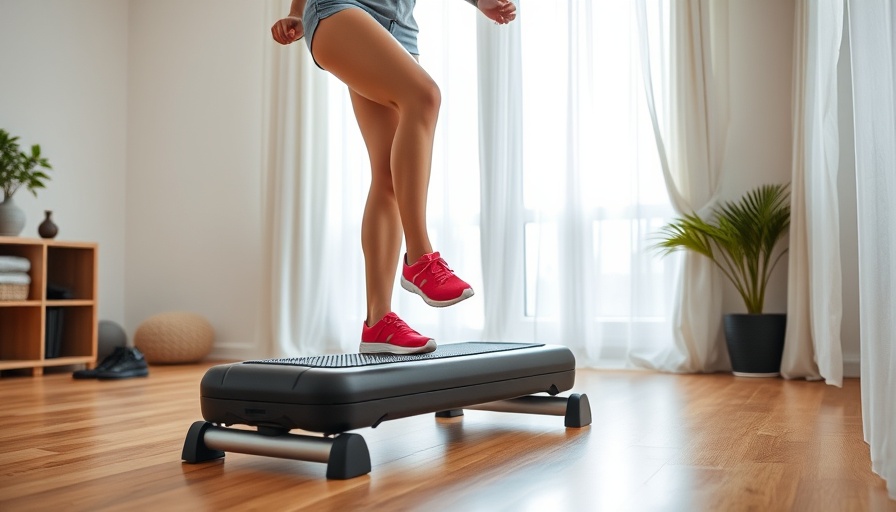
Building Upper Body Strength: A Comprehensive Guide
The journey towards a stronger upper body is often a shared aspiration among fitness enthusiasts, and if you're part of the SDA faith community, focusing on health and well-being aligns with your values of stewardship and self-care. In the recent workout session titled ‘Upper Body Strength Push: Chest, Shoulders, Triceps,’ fitness instructor Patrice leads participants through a structured workout designed to build muscle, enhance endurance, and promote a greater understanding of body mechanics. This progressive week-long challenge lends itself not only to physical benefits but also to community engagement and personal growth.
In [FREE Day 1] Upper Body Strength Push: Chest, Shoulders, Triceps- Build Muscle & Endurance, the discussion dives into an engaging approach to upper body strength training, prompting deeper analysis on how such exercises can fit into a healthier lifestyle for our community.
A Closer Look at the Workout Structure
The circuit on day one features a well-thought-out series of exercises, starting with a warm-up to engage the muscles and prepare the body. Warm-ups like arm circles and shoulder rolls are aimed at preventing injury and enhancing mobility. Following this preparation, Patrice guides participants through a structured series of exercises, including chest presses and shoulder raises, focusing on correct form and weight management. The breakdown of each exercise demonstrates an effective strategy for not just remaining injury-free, but also optimizing your workout performance.
The Importance of Choosing Appropriate Weights
As emphasized in the workout, selecting the right weights is crucial to ensure safety while fostering muscle growth. Patrice suggests starting light, gradually increasing weight as confidence and strength develop. This approach is especially relevant for the SDA community, which places a high value on health. The emphasis on listening to one's body resonates deeply with the principle of stewardship of the body—a notion often discussed within the context of physical wellness in faith communities.
Finding Community in Fitness
Partaking in these workouts can foster a sense of community, particularly when approached together as a congregational activity or in fellowship groups. Engaging with others while challenging oneself physically can boost morale and accountability. Community support in fitness aligns perfectly with the SDA ideals of nurturing relationships and encouraging one another in all aspects of life, including health.
Common Misconceptions About Strength Training
Many may believe that engaging in strength training solely benefits bodybuilders or athletes, but this notion couldn’t be further from the truth. Strength training, such as the sequences performed in this workout, is accessible and beneficial for all fitness levels. Contrary to some beliefs, it aids in weight management, improves overall metabolic health, and can even contribute to emotional and mental well-being. As proponents of holistic health, members of the SDA faith community can appreciate these benefits, as they underline the importance of caring for both physical and spiritual health.
Practical Tips for Maximizing Your Workouts
Individuals looking to enhance their workout experience can adopt several practical tips: first, establish a consistent workout schedule; second, set achievable goals that promote personal growth; and finally, ensure a balanced diet to support muscle recovery and overall fitness. Engaging in proper hydration before, during, and after workouts also plays a pivotal role in achieving optimal results.
Future Trends in Fitness
As we look towards the future, incorporating technology in fitness will likely continue to gain traction. Online workouts like those provided by Fitness Blender are revolutionizing home fitness, making structured, expert-led workouts more accessible than ever. This accessibility may encourage more individuals within faith communities to prioritize physical health, ultimately enriching their lives in accordance with their beliefs.
Final Thoughts: Embracing the Journey
This day one workout is not just about building upper body strength; it’s about embracing a journey of self-improvement and community engagement. By participating in fitness challenges like the one featured, you honor your body as a temple while also nurturing communal bonds. As you continue to strengthen your body, remember to celebrate every small victory along the way. The 10-day challenge is just the beginning of a fulfilling fitness journey.
To ensure you stay informed and engaged with these valuable insights, consider joining local fitness-oriented congregational groups and sharing your progress. This communal approach not only enhances personal commitment but also allows you to uplift others in their fitness journeys, encapsulating the spirit of togetherness and stewardship central to the SDA faith.
 Add Row
Add Row  Add
Add 




Write A Comment